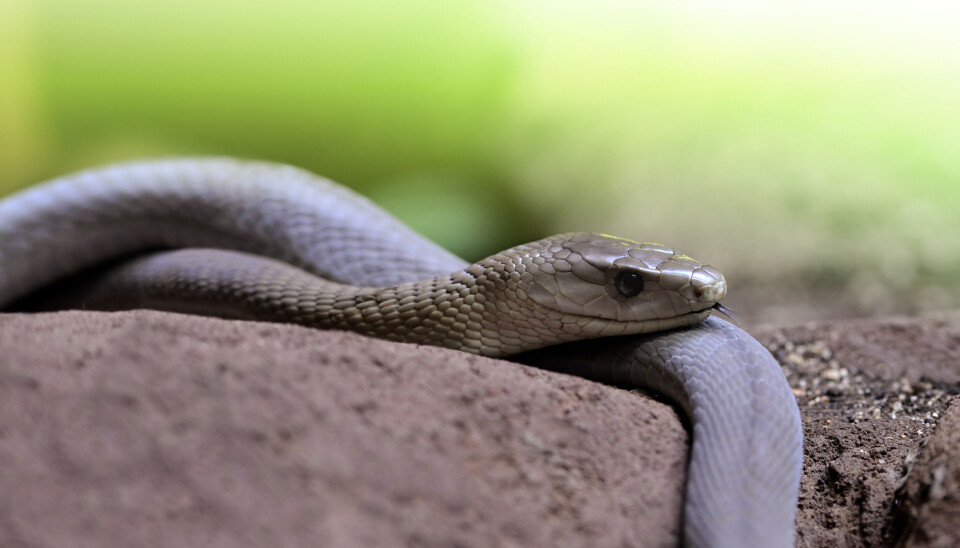
Snake venoms’ deadly secret unlocked: study
Scientists move one step closer to developing a near-universal antidote that could treat a broad range of snake bites.
Scientists have discovered how snake venom attacks our nerve cells, which could lead to more effective antidotes in the future.
“We’ve now found the weak spot in a wide range of nerve toxins that are the dangerous components in venom from mambas and cobras,” says lead-author Mikael Engmark, a Ph.D. student from the Department of Bio and Health Informatics at the Technical University of Denmark (DTU).
“The long-term goal is to make antidotes that work against a whole range of different snake bites,” he says.
The new study is published in the journal Scientific Reports.
Associate Professor Hans M. Maric studies similar protein-protein interactions at the University of Copenhagen, Denmark. He calls the new research interesting as the researchers seem to have figured out why specific antidotes only work against particular venom.
“They’ve found indications of how antidotes recognise different venoms--without causing major side-effects. This approach sets a new technological standard in toxicology and the result points towards a better understanding of venoms, which could improve treatments in the future,” says Maric.
Snake venom halts body’s internal communication
Snake venom is a cocktail of venomous substances that can have completely different biological functions according to each individual snake.
Many snakes in the viper family, including the mamba and the cobra, use a nerve toxin to halt communication between nerves and muscles. This results in muscle cramps, restricting the victim’s ability to move or breathe.
“The venom components are foreign substances in the human body, and just like other foreign bodies, the immune system might potentially react and produce antibodies to neutralise them. The problem is that when the immune system kicks in it takes about a week for the body to make adequate amounts of antibodies, while the victim may be dead within the hour,” says Engmark.
Venom contains “stealth” molecules
But there are other reasons why animals struggle to fight snake venom.
Imagine that the venom enters the body and binds to all of the various types of molecules available, and not only to receptors on the nerve cells.
If the venom binds to all types of molecules, then it would never make it to its target: the nerve cells. The new research shows that the toxins are extremely selective in choosing what they bind to. In fact, they exclusively bind to receptors on nerve cells.
“If they could bind to just anything, then the venom would never make us sick. The venom has developed not to interact with anything but its intended goal: the nerve cells. This have turned the toxins into a type of ‘stealth’ molecules that pass under the immune system’s radar until it hits its target. That’s why it’s difficult to make an antidote,” says Engmark.
Venom has an Achilles’ heel
The new study shows that nerve toxins cannot do anything but bind themselves to the nerve cells, and this is also their fatal flaw.
When Engmark studied how the antidotes bind to the snake venom, he discovered that all of them bind to the very same spot that the venom use to bind itself to the nerve cells.
“It was a ‘eureka’ moment,” says Engmark.
“The various toxins bind to different receptors or molecular pumps, while others bind to important enzymes on the surface of the nerve cells. But antibodies in the current antivenoms bind to the active site in each of the neurotoxins,” he says.
“We didn’t know that before and it also provides a new insight into the evolution of snake toxins,,” he says.
In the long run, the new discovery can be used to make more effective anti-venom.
“We want to end up in a situation where we have one antidote that works on all snakes in a given area, for example, sub-Saharan Africa. And now we’ve identified what to target,” he says.
-------------
Read the Danish version of this article on Videnskab.dk
Translated by: Catherine Jex





